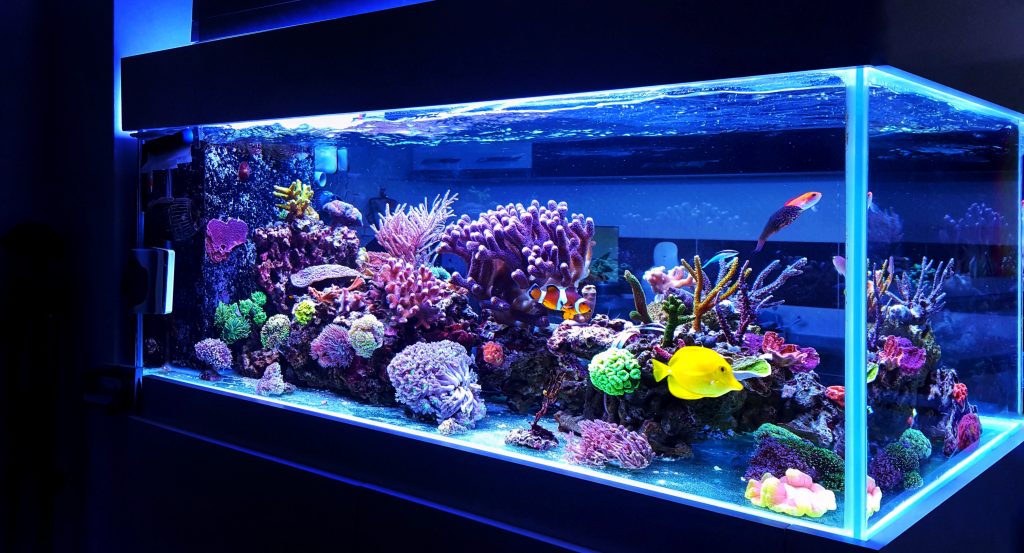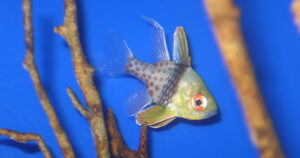Acclimation to a new aquarium home is a particularly stressful time in the life of any kind of captive fish. Like all aquatic animals, fish are shocked by rapid changes of water temperature or chemistry. Add to this the fact that fish take on a sort of psychological stress during this time, as they might be startled by abrupt changes of lighting (e.g. going into or coming out of packaging), experience fear of predation (i.e. from the human and net), face aggression from nasty and territorial tankmates, etc.
Needless to say, it does your beloved aquarium fish well to carry out a process of slow, gentle acclimation with each new introduction. This not only helps to reduce fish mortality from transfer shock, but it also reduces the incidence of stress-related illness later on.
Many, sometimes very different, approaches to fish acclimation have been taken successfully. We prefer the drip method. For this, Innovative Marine’s drip acclimation device works quite well. We suggest the following when employing drip acclimation methods:
- Handle/open all packaging (boxes, bags, etc.) as gently as possible and only slowly expose the animal to light.
- Place each bag in its own specimen container (e.g. bucket).
- Carefully cut open the seal of the bag with a small blade or scissors and release the contents into the container.
- Place a lid loosely over the container for shade and to prevent jump-outs.
- Assemble the drip acclimation device and initiate water flow from the tank into the bucket.
- Set acclimator drip rate.
Different types of fish require different acclimation durations to fully adjust to their new environment. For drip methods, we suggest following these guidelines:
- Anthias, gobies, butterflies, wrasses, puffers: 2-3 drips/second.
- Most other fishes: 2-4 drips/second.
- Extremely delicate or highly stressed specimens: 1-2 drips/second.
When the transport water has been diluted by a factor of four or five, the fish can be moved into the tank. Do not pour the water in the bucket into the tank; rather, transfer the animal directly with use of a net or scoop. Discard all wastewater in the bucket.
We suggest keeping the aquarium lights off during the introduction and for the rest of the day. This gives the newcomer a chance to slip in calmly under the cover of darkness and rest well before meeting its tankmates.
Slow, incremental change and gentle handling are paramount here. For a new fish, the little bit of extra time and care put into a controlled acclimation process can mean the difference between life and death! But don’t stress out too much yourself; by choosing captive bred, you are already one step ahead in making a smooth transition for your next aquarium fish.






Eli singleton says
Very informative, love algae barn, great products
michaelohl says
I’ve always used “Drop-N-Plop”. Havn’t lost any yet. Although I havn’t bought any particularly sensitive fish either. Looking forward to getting some of your tank bred fish.
Paul Sypolt says
very helpful for me
Alleister Jefferies says
You do a fantastic job of informing your customers on acclaimation!
hsmith5411 says
Great job with these blogs great information
Wrasse says
Very good info! One suggestion….it would be very helpful if you would post the salinity you keep your fish in, so we know when we receive them!
Jenna Bearden says
Thank you for the article! It was very helpful. I didn’t know about how many dps for different fish!